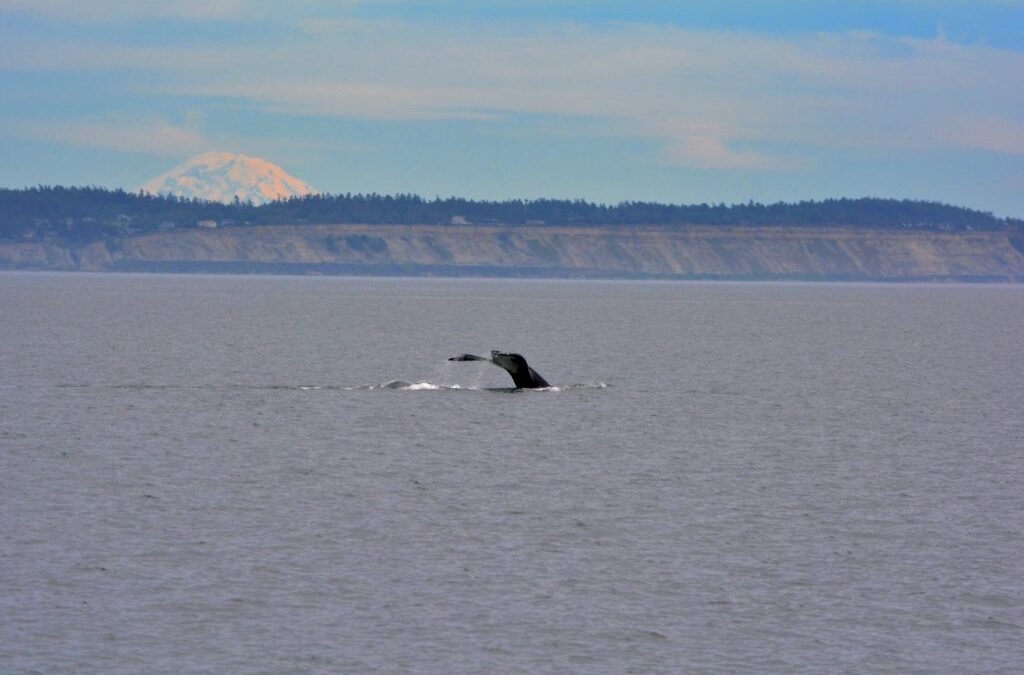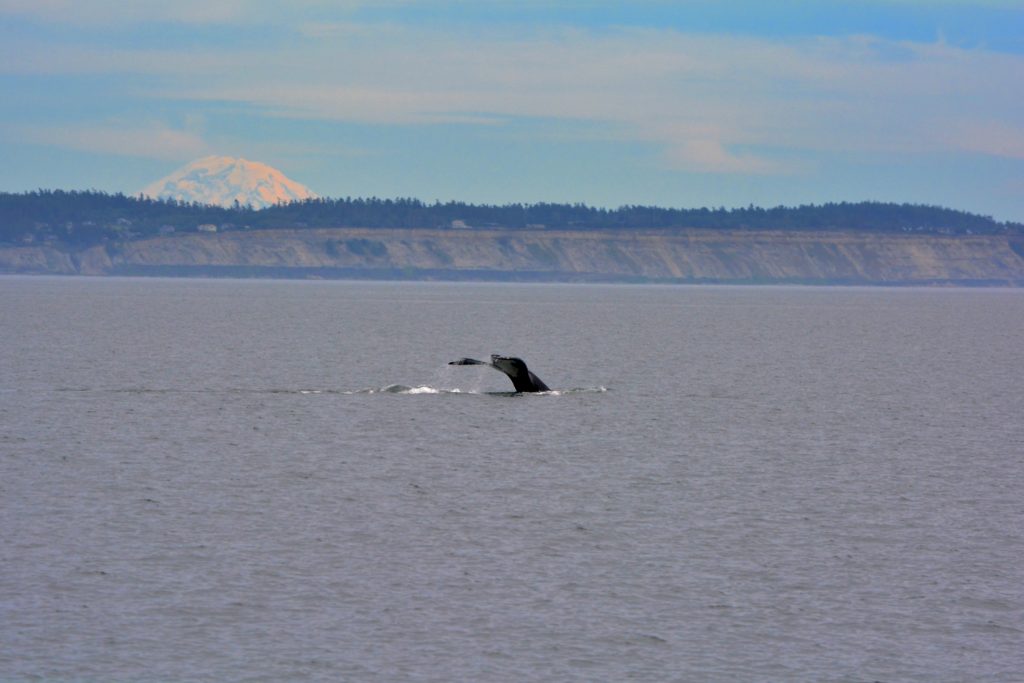[6/22/17 – 2:00PM – M/V Kestrel] Usually we only see one species of large whale per trip trip but some trips it seems like we’re seeing all the whales! Captain Gabe and I left aboard M/V Kestrel yesterday with a great crew of guests to search for some amazing wildlife. We headed north along San Juan Channel and eventually made it to the Cactus Islands. This is a little tucked away place in between Spieden and Johns Islands. With large wooded rocky cliffs, swirling green currents, and bull kelp forests we found a lot of Harbor Seals lounging on the exposed rocks and swimming among the bull kelp fronds. Harbor Seals are probably the most common marine mammal in these waters and they perhaps are the cutest as well. With big, round eyes and dog-like faces they are usually pretty curious and well spend whatever time they’re not sleeping or hunting staring right back at you wondering what you’re doing.
We soon exited the Cactus Islands through Johns Pass, another skinny winding pass that makes you feel more like you’re on a river sometimes than a sea. As we started going really fast (Kestrel is a special vessel that can sometimes go up to 40 knots!) I spotted a blow far off our starboard side. We turned that way and started searching. We soon saw another blow and then a fluke. It was a Humpback Whale! This one was a younger one (so only about 30-40 feet long) and was lazily swimming and eating in plankton rich area between Stuart and Waldron Islands. We watched this Megaptera novangliae (scientist for Humpback Whale) swim, dive, and fluke a few times as he or she (it’s hard to tell unless they have a baby or you look underneath them…) swam east. We next bolted north west towards Canada!
It was a perfect day to open Kestrel up as even the wider channels like Boundary Pass and Haro Strait were flat calm and you could see for miles. We soon zoomed past Sidney Island in Canada and spotted a few Transient (Bigg’s) Orcas just outside Sidney Harbor. It was a singular family (matriline) and they were actively hunting and eating. We saw a few splashes and tail slaps, then one of the younger orcas started porpoising (started swimming really really fast!). Then they started traveling again on their merry way. Transient Orcas are the type of orcas that we find in these waters that feed on marine mammals. This area is more famous for the ‘Southern Resident’ Orcas which feed on salmon, but we’ve been seeing more and more of the Transient Orcas in the past few years which is interesting and exciting. These two groups, though they look the same, don’t interbreed or even interact with each other any more.
We soon had to head home, but luckily on Kestrel that does not take too long. Wes topped by the other side of Spieden Island and saw a Bald Eagle in a scraggly tree along the shoreline. He even took off and flew over our heads! Then we really headed back to Friday Harbor, but right before we turn the corner we saw something pretty strange. It was a porpoise! which we see a lot of in these waters, but this one looked like a combination of the two species of porpoise that we see in this area, Harbor Porpoise and Dall’s Porpoise. There is research stating that they sometimes do mate and make hybrid calves and I believe that this one was one of those. It quickly swam past, but it had all the coloration of a Harbor porpoise, but the size and body shape of a Dall’s Porpoise… cool!
Whale, until next time,
Naturalist Erick


